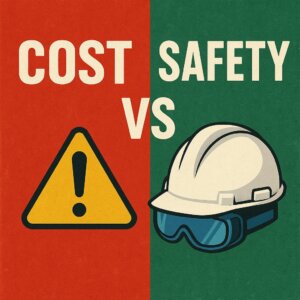Chemical protective suits are more than just equipment — they are essential life-saving barriers in high-risk environments. Whether you work in chemical plants, pharmaceutical labs, or hazardous clean-up tasks, choosing and wearing your PPE correctly can make all the difference.
To help you better understand the process, the United Nations Office on Drugs and Crime (UNODC) has released a professional video tutorial showing the step-by-step procedure. Scroll down to watch.
🎥 Watch the Full Video from UNODC
Video source: United Nations Office on Drugs and Crime (UNODC)
Why Is It Important to Choose the Right Chemical Suit?
Different chemicals present different levels of risk. A protective suit that works for one task may be inadequate for another. Wearing the wrong PPE can expose workers to toxic substances via skin contact, inhalation, or cross-contamination.
Key selection factors:
-
Chemical type and concentration
-
Exposure duration
-
Mobility requirements
-
PPE compatibility (e.g., mask, gloves, boots)
What Type of Chemical Suit Do You Need?
| Hazard Level | Recommended Suit Type |
|---|---|
| Liquid chemical splash | Type 3 or Type 4 suit |
| Dry particles and aerosols | Type 5 or Type 6 suit |
| Gas or vapor exposure | Fully encapsulated suit |
| Unknown or mixed exposure | Highest-rated full-body PPE |
If you’re unsure which type fits your application, contact CHEAMY’s safety experts — we’re here to help with tailored suggestions.
How to Wear a Chemical Protective Suit (As Shown in the Video)
Correct donning (putting on) and doffing (taking off) is critical. Even the best PPE can’t protect if it’s worn incorrectly.
✔️ Donning Steps:
-
Start from the bottom: Step into the suit and boots.
-
Zip up fully to the neck; close all flaps and storm covers.
-
Put on the hood, making sure it overlaps with your respirator/mask.
-
Wear gloves, ensuring the cuffs are tightly sealed.
-
Have a colleague perform a final check to ensure all gaps are sealed.
A second person should always assist to confirm fit and sealing.
Safe Removal Procedure (Doffing) – Covered in Video & Just as Important
Removing PPE carelessly can undo all your protection. Always:
-
Remove gloves first, then the suit, hood, and finally the respirator.
-
Avoid touching the contaminated outside of the suit.
-
Use clean gloves between removal steps.
-
Wash hands and exposed skin immediately after removal.
Caring for Your Chemical Suit
Proper cleaning and storage of reusable suits are just as important as proper use. Follow manufacturer guidelines for decontamination, drying, and storage in a clean, dry space.
Need Help Choosing the Right PPE?
CHEAMY offers chemical protective suits that meet EN 14605 and other international standards. Whether you need disposable coveralls or full-body chemical suits, we can help you select what fits your environment and budget.
Summary Table
| Step | Tip |
|---|---|
| Choose the right suit | Match suit type to chemical hazard and task complexity |
| Wear properly | Follow step-by-step donning instructions; check seals |
| Remove safely | Avoid contamination during removal |
| Maintain and store correctly | Clean and dry according to standards |
At CHEAMY, we believe PPE should offer both protection and peace of mind.
We don’t just provide PPE — we provide safety.
For custom advice or product details, feel free to contact our team.








